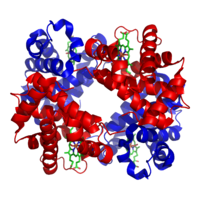
M2-like polarization of THP-1 monocyte-derived macrophages under chronic iron overload
Sign Up to like & getrecommendations! Published in 2020 at "Annals of Hematology"
DOI: 10.1007/s00277-020-03916-8
Abstract: Macrophages are characterized by phenotypical and functional heterogeneity. In different microenvironments, macrophages can polarize into two types: classically activated macrophages (M1) or alternatively activated macrophages (M2). M1 macrophages are a well-known bacteriostatic macrophage, and conversely,… read more here.
Keywords: chronic iron; thp; iron overload; derived macrophages ... See more keywords

Cost-Utility Analysis of Three Iron Chelators Used in Monotherapy for the Treatment of Chronic Iron Overload in β-Thalassaemia Major Patients: An Italian Perspective
Sign Up to like & getrecommendations! Published in 2017 at "Clinical Drug Investigation"
DOI: 10.1007/s40261-017-0496-1
Abstract: PurposeDeferiprone (DFP), deferasirox (DFX) and deferoxamine (DFO) are used in thalassaemia major (TM) patients to treat chronic iron overload. We evaluated the cost-effectiveness of DFP, compared with DFX and DFO monotherapy, from an Italian healthcare… read more here.
Keywords: chronic iron; treatment; iron overload; iron ... See more keywords

Chronic iron overload induces functional and structural vascular changes in small resistance arteries via NADPH oxidase-dependent O2- production.
Sign Up to like & getrecommendations! Published in 2017 at "Toxicology letters"
DOI: 10.1016/j.toxlet.2017.07.497
Abstract: Iron overload leads to excessive free radical formation and induces cardiovascular dysfunction. Thus, our aim was to investigate the structural and endothelial modulation of vascular tone induced by chronic iron overload in mesenteric arteries. Rats… read more here.
Keywords: iron; chronic iron; resistance arteries; iron overload ... See more keywords

Inhibition of Nrf2 alters cell stress induced by chronic iron exposure in human proximal tubular epithelial cells.
Sign Up to like & getrecommendations! Published in 2018 at "Toxicology letters"
DOI: 10.1016/j.toxlet.2018.06.1218
Abstract: Iron can catalyze reactive oxygen species (ROS) formation, causing cellular injury. In systemic iron overload, renal tubular epithelial cells are luminally exposed to high iron levels due to glomerular filtration of increased circulating iron. Reports… read more here.
Keywords: epithelial cells; chronic iron; iron exposure; tubular epithelial ... See more keywords